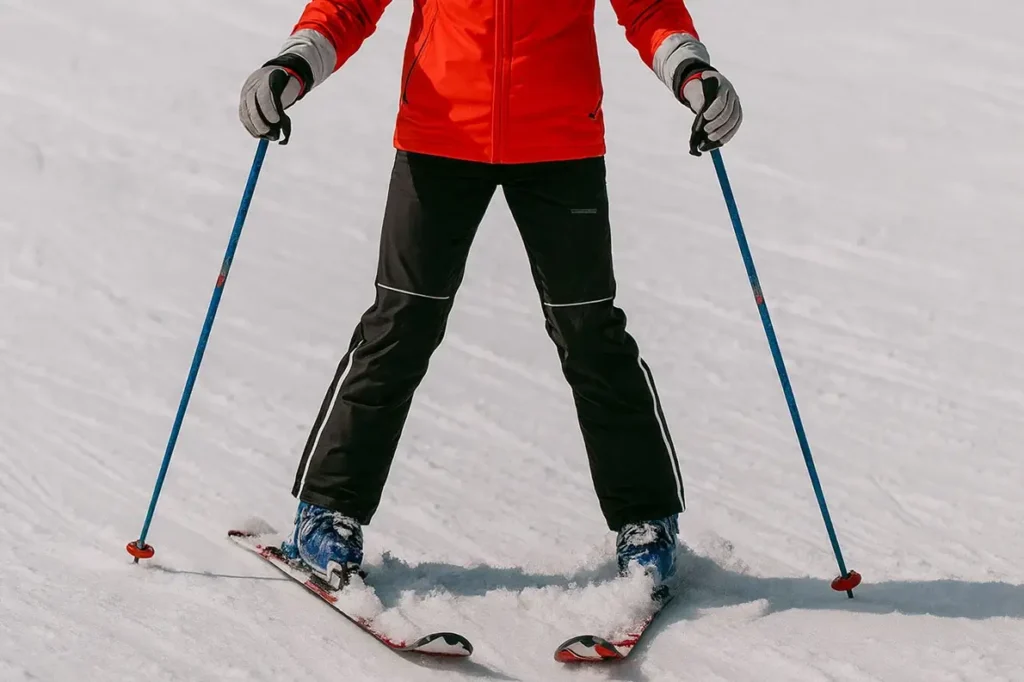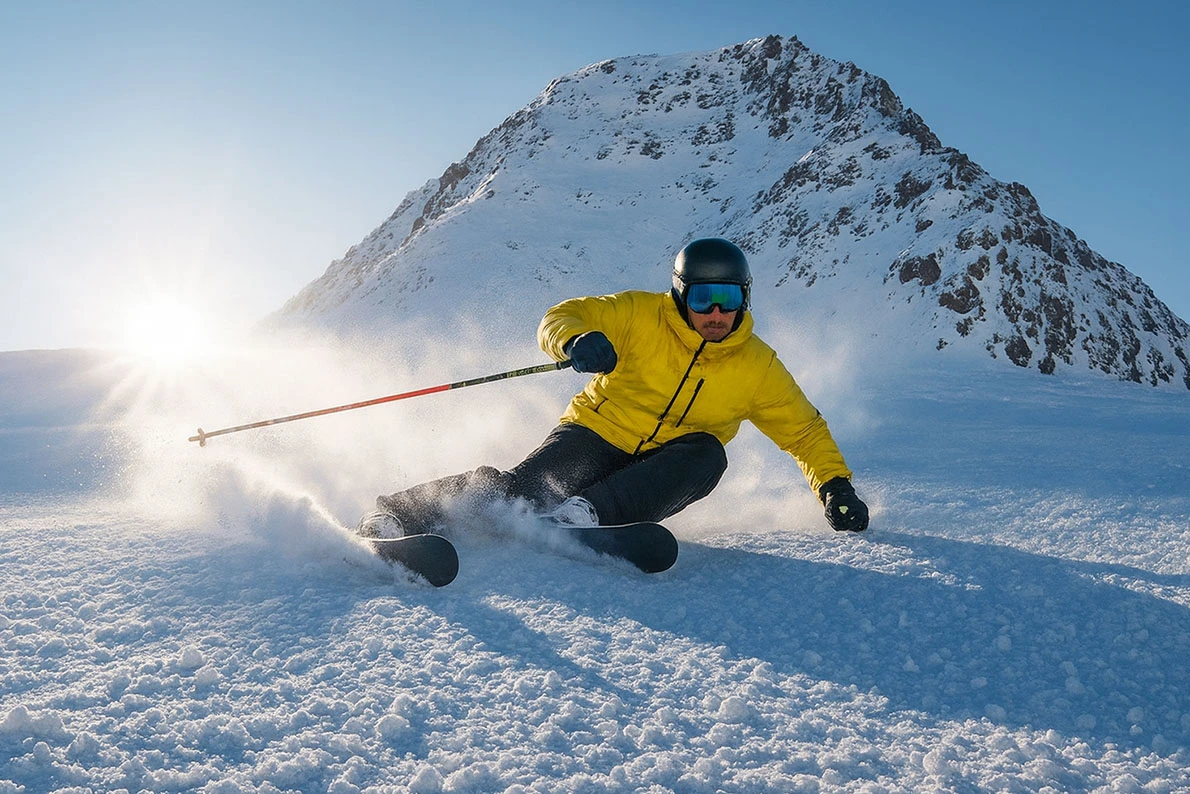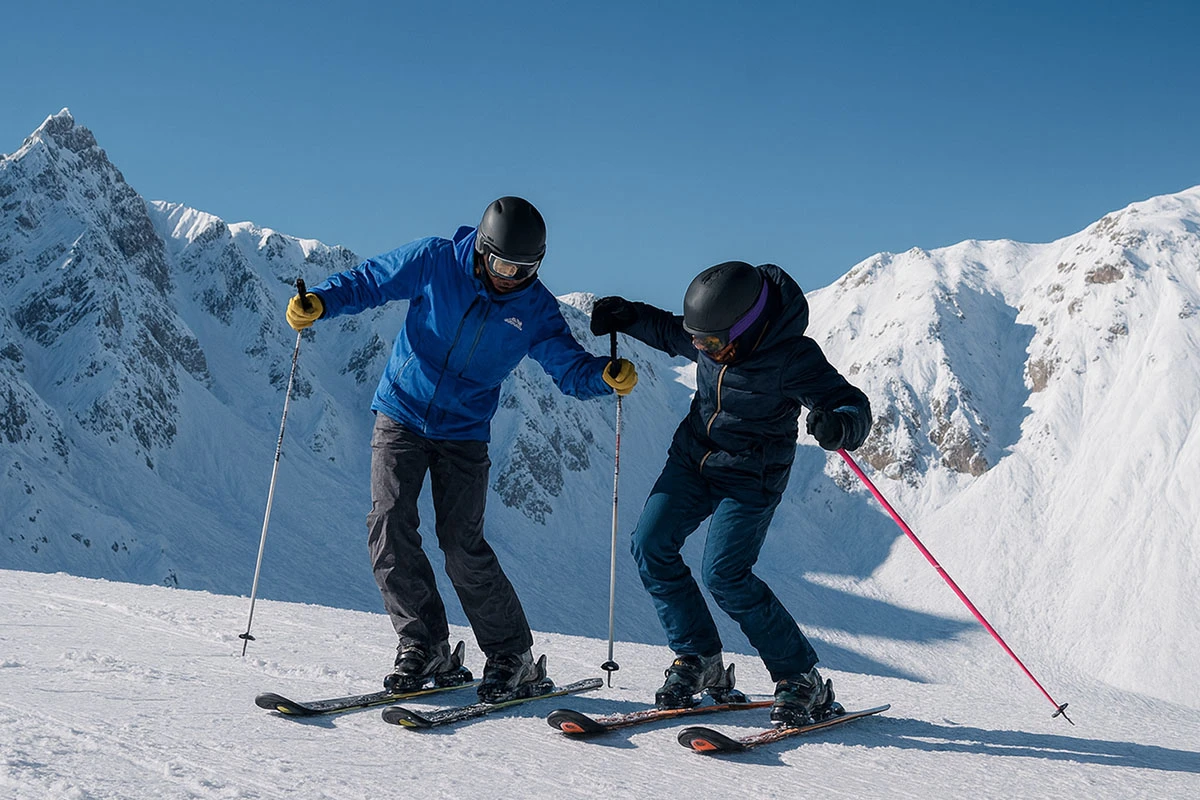
When beginners step onto red slopes for the first time, the excitement can quickly turn into fear. These trails demand more control, precision, and courage compared to green or blue runs. Many skiers underestimate the challenge, leading to common errors that slow down their progress.
The steepness, the speed of other skiers, and the constant need to make decisions can easily overwhelm an inexperienced rider. To avoid repeating these mistakes, it is essential to know what to watch out for and how to correct them.
And if you want your ski day to start smoothly, consider convenient transfers to Hunter Mountain by checking this option: https://comfort-ski.com/trips/hunter-mountain-ski-transportation.html
“Confidence on red slopes doesn’t come from speed — it comes from technique.”
Overestimating Speed
Many newcomers believe that skiing faster will make them feel more professional. The opposite is true. On red slopes, speed without technique only increases the risk of losing balance. Beginners often let their skis run freely, without carving turns to control descent. What usually follows is a frantic attempt to stop, often ending with a fall or uncontrolled slide. The thrill of speed blinds them to the reality that the mountain requires patience.
The truth is that every slope has its rhythm. Skiing too fast is like trying to dance without listening to the music. Your skis may move quickly, but your movements lack grace and connection. To build confidence, skiers must learn to slow down deliberately, carving wide arcs and embracing control over chaos. By taking the time to practice, even an intimidating red slope begins to feel like a welcoming stage for progress.
A skier who focuses on smoothness rather than speed will soon notice the change — not just in their technique but also in their state of mind. Suddenly, the slope feels less hostile and more like a partner in a dance. The snow becomes a canvas, and every turn is a brushstroke, creating lines of control and beauty.
- Practice controlled braking
- Focus on linking turns instead of straight runs
- Reduce speed before steeper sections
Leaning Back Too Much
Fear makes beginners lean back as if trying to resist the slope. This creates instability, as most control comes from the front of the skis. A skier leaning back loses precision and struggles to initiate proper turns. The skis start skidding instead of biting into the snow, and every movement feels harder than it should be. It is almost as if the mountain pushes you downward while you are pulling yourself upward, creating tension that works against you.
To overcome this, trust is necessary — trust in your equipment and in the technique itself. By leaning slightly forward, with your shins pressing gently into the boots, you create a stable foundation. Suddenly, turns become smoother, skis respond faster, and your body begins to flow with the slope instead of fighting it. It is a mental shift as much as a physical one: leaning forward is choosing courage over hesitation.

Think of the skis as loyal horses — they need guidance from the front, not pressure from behind. When you position yourself correctly, the ride feels natural, and the slope itself seems to carry you. The tension in your body releases, your breathing evens out, and each descent turns into a journey rather than a battle.
“The mountain rewards those who lean into the challenge, not away from it.”
Forgetting About Upper Body Position
On red slopes, beginners often twist their shoulders in the direction of fear rather than in the direction of travel. This mistake throws off balance and makes turns jerky instead of fluid. You might notice your torso twisting sideways, arms flailing, and head glancing nervously at the edge of the slope instead of the path ahead. It is an instinctive reaction, but it sabotages the natural flow of skiing.
The secret lies in keeping the torso facing downhill, like a compass that always points forward. The legs and skis do the carving, but the chest stays calm and steady. Imagine your upper body as the conductor of an orchestra — it doesn’t play every instrument, but it keeps rhythm and harmony. By focusing your gaze down the slope and keeping hands visible in front of you, balance and control become second nature.
With practice, the body learns to separate the roles of upper and lower parts. Your torso becomes a steady anchor, while your legs provide the motion. This separation is a milestone for every skier, turning awkward descents into smooth, controlled lines.
- Keep hands forward and visible
- Imagine holding a tray to stabilize arms
- Let legs do the steering while torso stays calm
Skipping Warm-Up Turns
Another common mistake is starting the descent without warming up. Many beginners launch straight into the slope, tense and unprepared. This leads to stiff movements and unnecessary falls. Muscles that have been inactive suddenly face the shock of steep snow, and the brain struggles to coordinate movements under pressure. The result is a rough, clumsy beginning that shakes confidence.
The solution is simple but often overlooked — warm-up turns. Take the first part of the slope slowly, like a conversation with the mountain. Short, gentle turns loosen the legs, activate the core, and calm the mind. Think of it as tuning an instrument before a concert: once the body is ready, the performance improves.
Warming up is not only about muscles — it also gives your mind time to settle. As you make the first easy arcs, the fear that gripped you at the top slowly melts away. Confidence grows with every smooth turn, and by the time the slope steepens, you are ready to face it with ease.
- Begin with small side-to-side turns
- Add gentle braking drills
- Build up to longer, smoother carves
Ignoring Terrain Changes
Red slopes often include sudden dips, icy patches, or narrower passages. Beginners sometimes overlook these details, focusing only on the path directly in front of their skis. They ski with tunnel vision, blind to what lies further down. Inevitably, the unexpected catches them off guard, breaking rhythm and causing unnecessary falls. The mountain is never static; it changes with every meter, every patch of snow, every gust of wind.

Experienced skiers scan the slope ahead, always looking two or three turns forward. This foresight gives them time to prepare — to adjust speed, shift weight, or widen a turn. It transforms skiing from a reaction to an anticipation. Reading the mountain is like reading a story: each turn leads to the next, and awareness is the key to flowing through it gracefully.
Snow reflects not just light but also information. The way it sparkles may indicate ice, the shadows may hide bumps, and the wind may reveal soft drifts. To see the slope in this way is to ski with wisdom rather than chance.
Not Using Poles Effectively
Poles are more than accessories — they are extensions of your rhythm. Many beginners let them dangle uselessly, or worse, stab the snow randomly, breaking their flow. Without proper use, skiing feels mechanical and disjointed. Poles are not crutches, they are guides, and when used well, they provide the beat to every movement.
Planting the pole before a turn is like pressing a key on a piano at just the right moment. It sets the rhythm, stabilizes the body, and signals the legs to move in harmony. With practice, pole use becomes subtle yet transformative. Suddenly, skiing feels like dancing — every pole touch a step, every turn a graceful movement across the slope.
Beginners often underestimate how much confidence comes from rhythm. The gentle flick of a pole becomes a promise: the next turn is coming, and you are ready for it. Step by step, touch by touch, control grows until skiing feels effortless.
- Plant pole slightly ahead of your boots
- Use a gentle wrist flick, not an arm swing
- Sync pole touch with turn initiation



